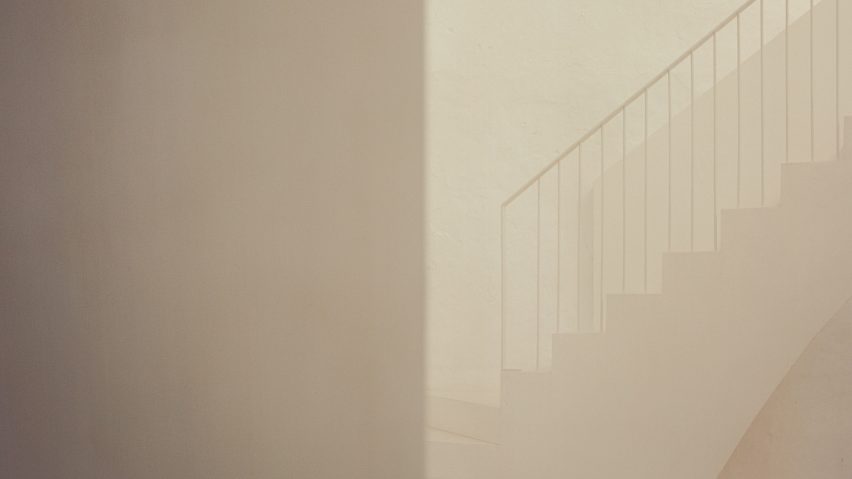
Digital photography is "too much to digest" says Simone Bossi
Capturing buildings using film allows you to "step back and have a distance from the subject," says architectural photographer Simone Bossi, who says digital imagery can be "quite misleading".
Italian photographer Bossi is fast establishing himself as one of the leading names in architectural photography.
He told Dezeen that, unlike many other photographers in this field, he only takes between 20 and 30 photographs of each building he shoots.
"All my reportage is one picture per position," he said. "I just take my shot and then I proceed. Maybe it's the wrong one, but in that moment it was right."
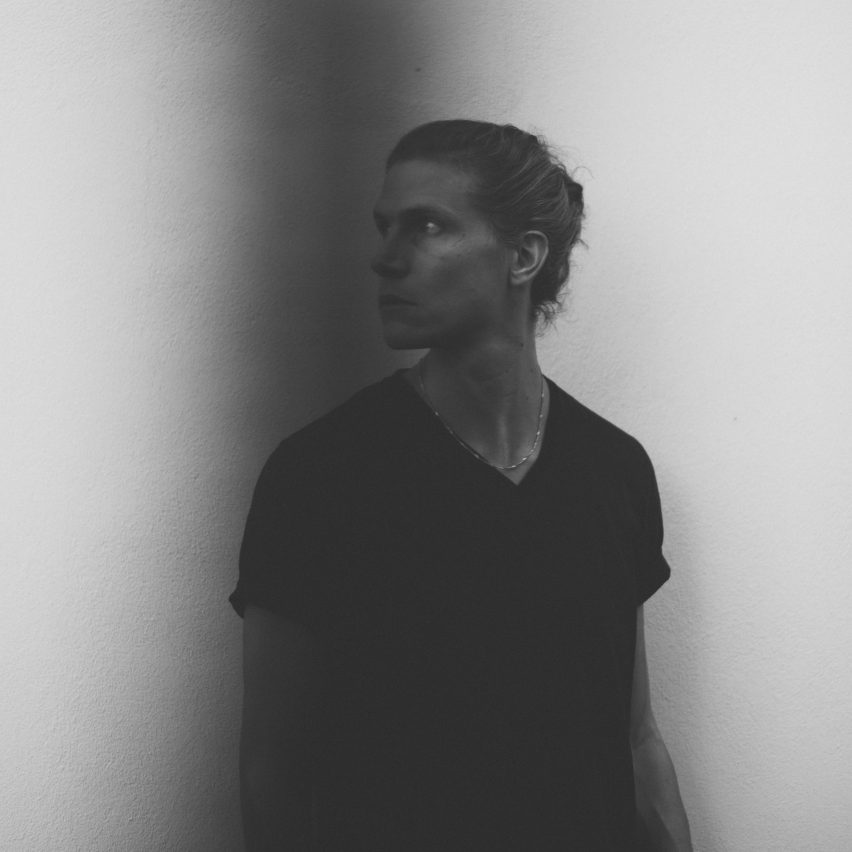
At a time when digital photography makes it easy to take hundreds of photos on each shoot and correct mistakes in the edit, he prefers to spend more time thinking than shooting, to ensure that every picture is carefully considered.
Digital makes it too easy to correct
This approach stems from Bossi's use of a large-format, analogue camera. It is a format that was once common among architectural photographers but has become rare following the advancement of digital cameras.
Although Bossi started out shooting with digital, he switched to analogue to force himself to "respect the moment of the click".
He believes the use of digital cameras leads architectural photography to become too contrived; he claims it's better to appreciate the beauty of imperfections than it is to make images feel too polished.
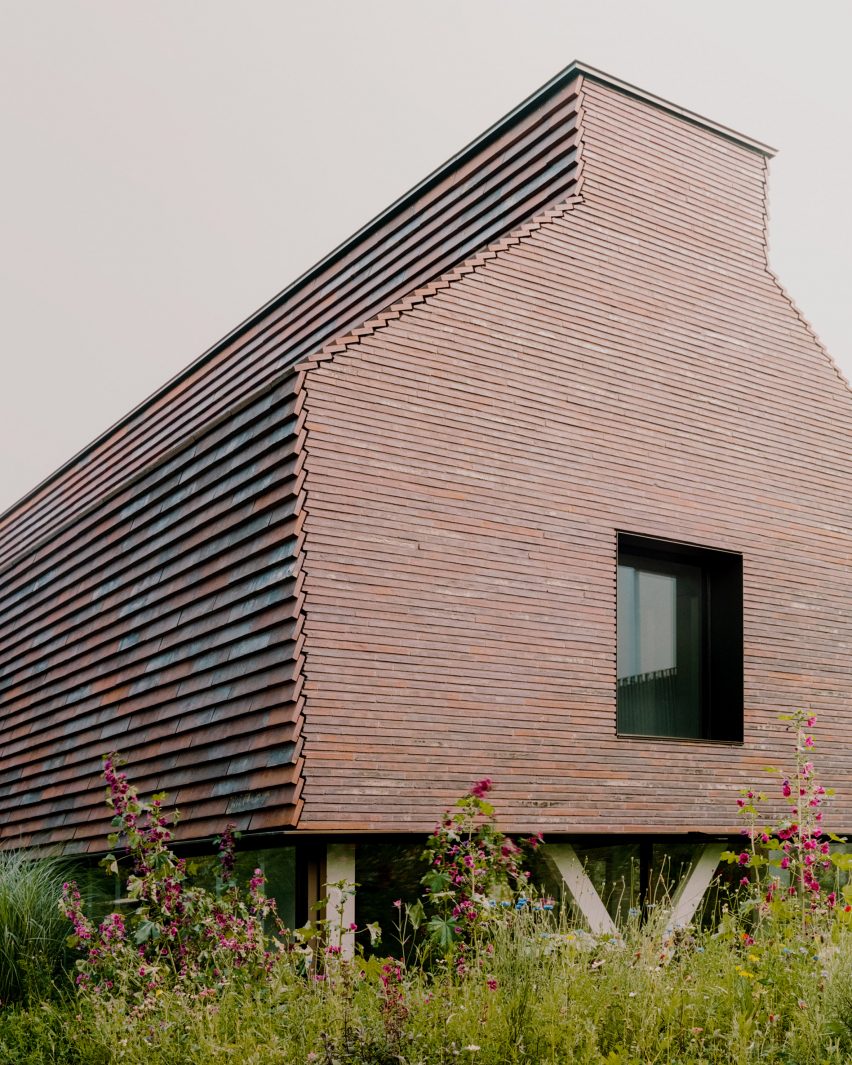
Digital "was too much to digest and too many pictures to control", he said.
"There are too many chances and this leads the aesthetics," he told Dezeen. "You can have everything at any time and you can correct any time you want; I think this is quite misleading."
Bossi trained as an architect before moving into photography. His pictures are often praised for their atmospheric quality. Images of projects such as the House of the Archeologist or Surrey Docks Farm are characterised by soft lighting, purposeful use of colours and strong attention to detail.
The photographer says that his aim with every photo set is to communicate his emotional experience of a building.
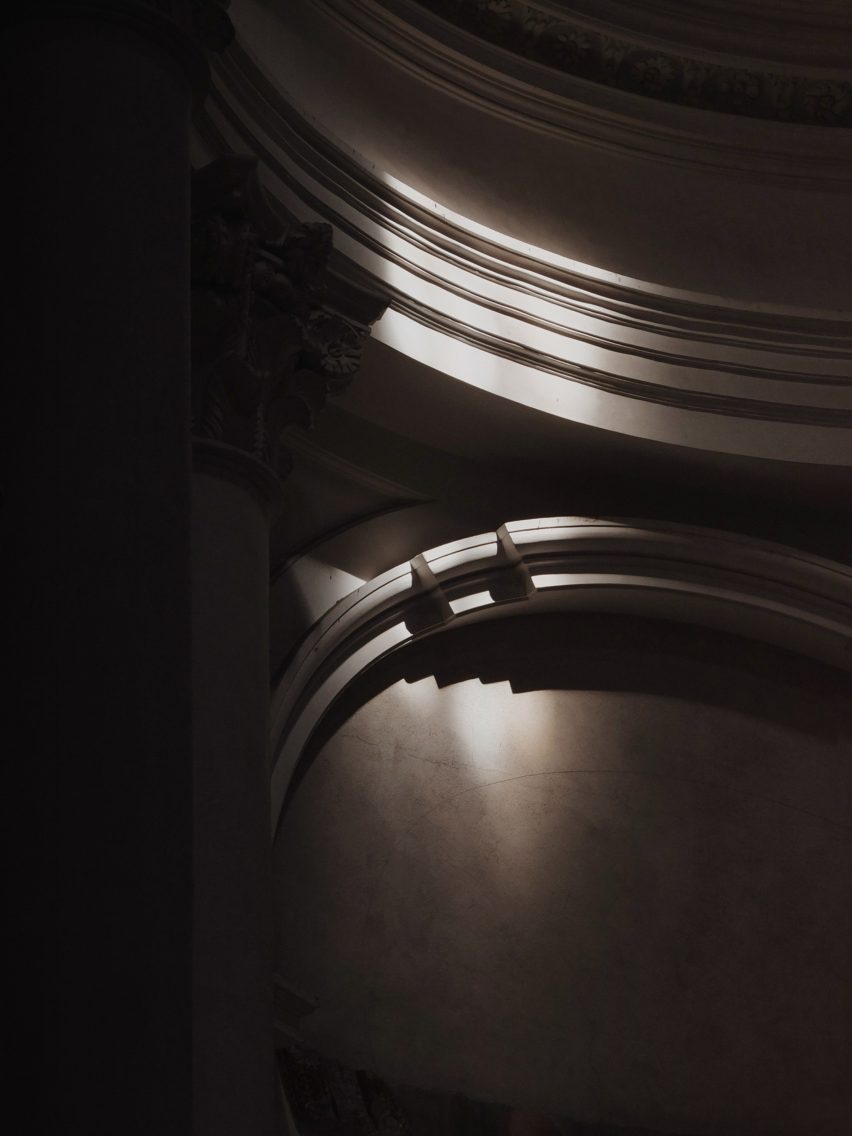
He rejects the use of colour and lighting as a style tool, which has proliferated thanks to the rise of Instagram. He says his post-production editing process is fairly simple – he simply emphasises these elements to help him create a certain mood or feeling.
"It's important to give a meaning to the voice of the colour," he said. "Otherwise colour is a filter; it's a trend."
Read on for an edited transcript of the interview:
Amy Frearson: What led you to become an architectural photographer?
Simone Bossi: I'm actually an architect. I studied architecture in Milan, and during my studies, I went to Spain and the Netherlands. Then I was working as an architect in the Italian part of Switzerland.
For me, photography was a different way to approach architecture and personal enrichment more than the job of the architect itself. I started to develop an attention to the emotional side of the projects, and I felt I needed to be more in the real space of reality and less at the desk.
I started to shoot some projects for the office I was working for, Stocker Lee Architetti, and it was a revelation; it was a really personal experience. I felt like I could have more of a relationship with architecture and space. I was feeling emotions from the space and photography was a medium to ride it.
The result is a picture but it's not the most important part of the story. It's just a reaction from the experience. Everything is meeting at a certain point in space and exploding, and you're trying to catch it. I love it the idea that space can cause this reaction of feelings that is unique to every human, because everybody has their own background and story.
Amy Frearson: How would you describe your photographic style and approach?
Simone Bossi: I don't think style is the right word because I think that's a concept of limits. A style only goes from one point to another, and there are a group of features that define whether you are in that style or not. The absence of limits is something that attracts me a lot. I want to be open and free with my work.
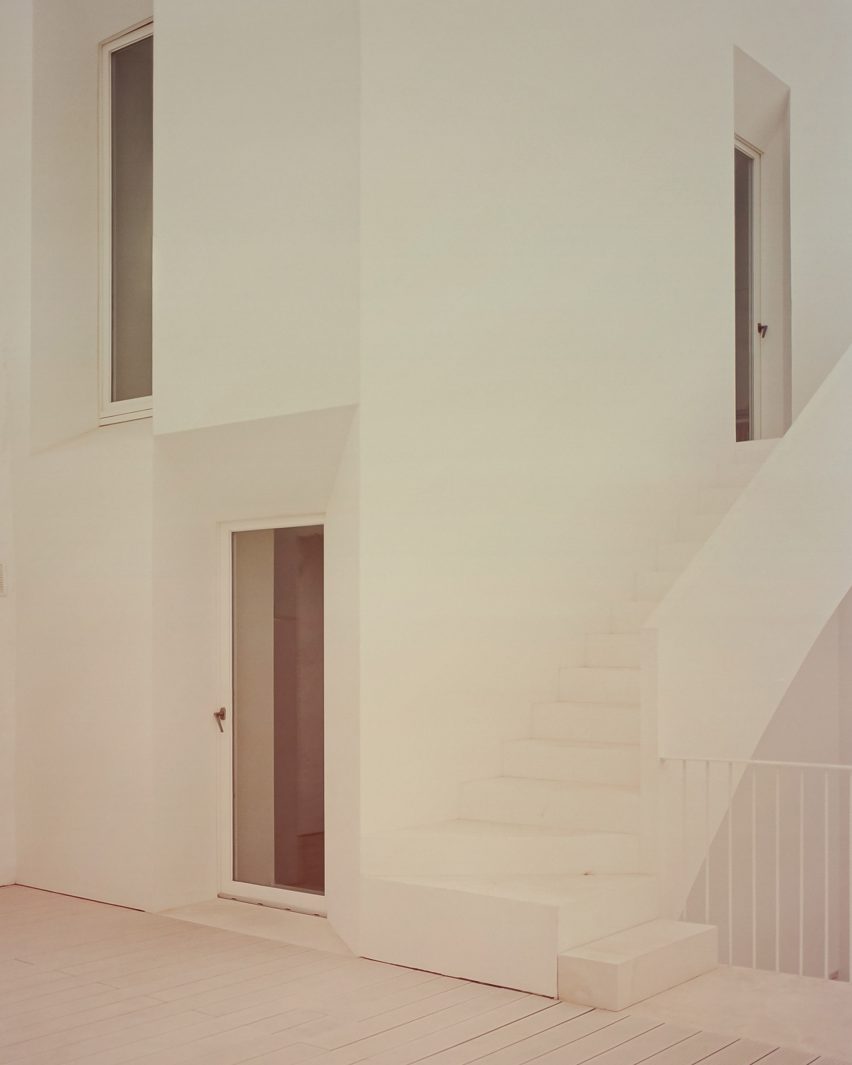
Amy Frearson: Is there a certain mood or atmosphere that you try to convey in your pictures?
Simone Bossi: Someone once told me, "we do see what we do know". It means we see what we are. The mood of the picture is what I am. It's an aesthetic balance that could suggest a romantic mood, a nostalgic mood or maybe a sort of sadness, but one that makes you smile.
That's clear to me in everything, not just photography. In architecture, it's amazing how you can compare the architect or the client with the building; how they relate to you, how they present themselves and how they speak is somehow manifested in the architecture itself.
When you see this, it is amazing and very intense. That's why, when I go to experience architecture, I go as I would to meet a person. I try to shoot a building as if I'm relating myself to another human being.
Amy Frearson: Do you think your experience as an architect affects the way you translate buildings into photographs?
Simone Bossi: At the beginning, I was strongly influenced by the fact I'm an architect. It was a very rigid form of representation.
Now, after a few years, I am more conscious of the emotions and feelings I'm working with, from myself, from the architecture and from the people that worked on the architecture. Of course, my eye and my unconscious react to line and composition as an architect, but I've just shifted to stay more free and open, to try to add another layer.
Amy Frearson: Can you tell me more about your technical process? What camera equipment do you use?
Simone Bossi: I'm often asked what kind of camera I use and I say it doesn't matter. What's most important is to respect the speed of yourself, the rhythm of yourself and to match it to the medium.
In the beginning, I was working in digital, because I was born in that generation. After a while, I started to better understand the rhythm and speed of myself, and this led me to investigate the medium of film. Digital was too much for me, it was too much to digest and too many pictures to control.
There are too many chances and this leads the aesthetics. You can have everything at any time and you can correct any time you want; I think this is quite misleading.
I started to appreciate the aesthetic of the imperfection, to appreciate a slow process. With the analogue process, after a shoot, you need to step back and have a distance from the subject. I felt like I was completely in balance with the process; I shot less and I thought more.
There are a lot of things you try to control in life but there are some things you cannot control. You have to accept these things, because if you cannot live in balance with the things that you cannot control, then you cannot see exactly what you're shooting.
All my reportage is one picture per position. I just take my shot and then I proceed. Maybe it's the wrong one, but in that moment it was right. It becomes very meaningful and you start to appreciate even the wrong picture.
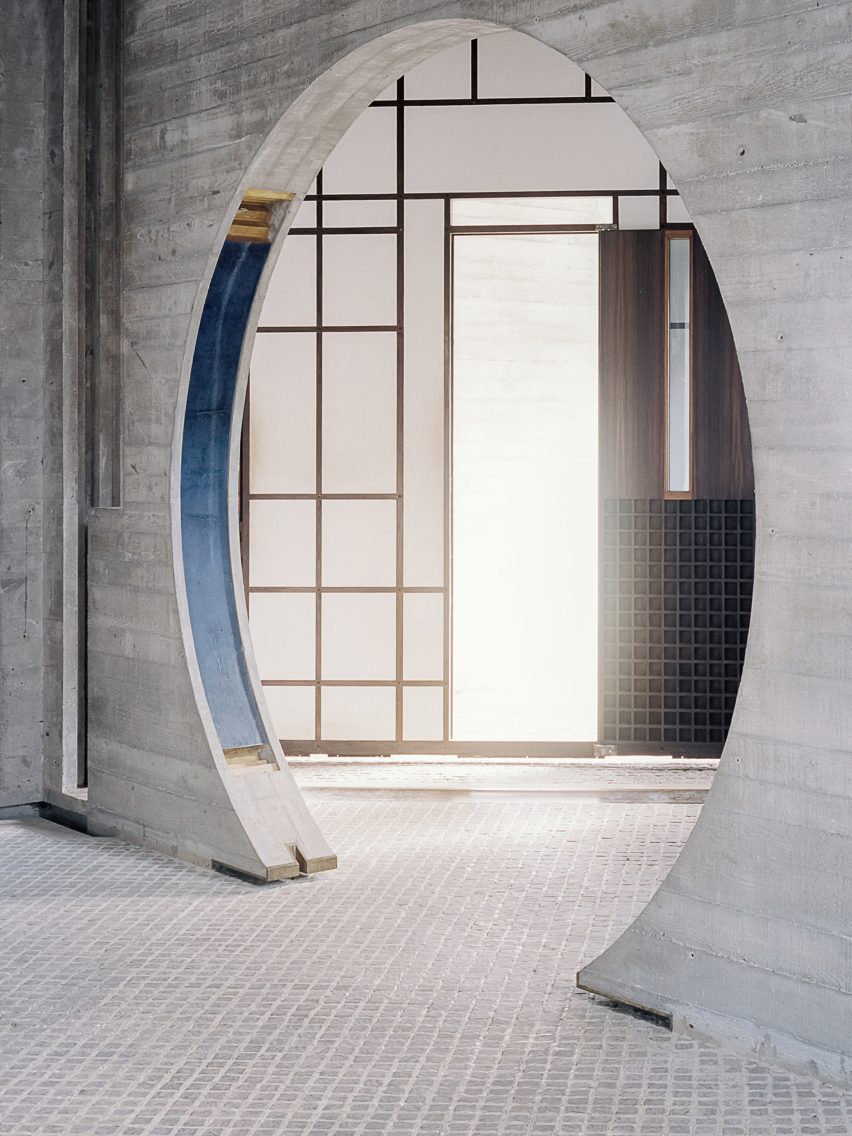
Amy Frearson: How many shots do you typically take for each building?
Simone Bossi: I guess around 20 clicks, or 30 if I'm really amazed by something. But the days are still very long. I take my time, I leave the camera in the corner and then I see what I feel. I respect the moment of the click. The process that brings you to pick it comes from the space, the moment, the position and the consequences of your feelings. That moment is the finishing point and it's like a release for me.
The first shot I work on is always the longest one because I need to set the tone. It's like when you meet a person; there's a lot of discovery in it and you need to set a measure between yourself and the subject.
Amy Frearson: How much do you alter your images in post-production?
Simone Bossi: There is some editing of course. Film can also be quite misleading nowadays; it can be just a trend, a hipster thing. But I use it as a consequence of an approach, which is a completely different thing. I'm not using it because I'm romantic or nostalgic, or because I'm a hipster.
And I know that we are in 2021 so I take the process and I relate it with my generation. So, of course, there's software, there are files, we do need to correct some things. But we only have one picture, so it's not a question of which view we use. The process of the selection stays within the experience, so I'm able to relive the experience very intensely in this part of the process.
Amy Frearson: Do you have a particular approach when it comes to lighting, colour and contrast levels?
Simone Bossi: Again, I think it's part of the atmosphere I want to transmit. Colours are part of the experience for me; they increase the feeling that I want to share. So, colour balancing is something I really like to work on.
I feel really comfortable working with empty space and voids as the main materiality of my pictures. When you focus deeply on such untouchable things, everything around becomes important. A warm tone can transmit a comfortable feeling; you feel cosy because there's a presence in the warm tone. A cold tone can be perceived as an absence, which can be nice because I might want to emphasise the idea that I felt alone, detached or scared, maybe because of the scale of the building.
It's an introspective experience of course. If I want to give something to space and its darkness, to feel like it's dangerous to proceed or that there's something unexpected, then maybe it gets a colour. If I want to emphasise that there was something magic around the corner that I really want to see and experience, I will maybe make it more warm.
It's important to say that the colours are a consequence. Otherwise colour is a filter; it's a trend. Then the picture doesn't endure. I'm always questioning how a building or space gets older, like a woman or a man. It's great when you see a charming old man and you get a sense of what he has experienced in his life. Buildings are the same. That's why it's important to give meaning to the voice of the colour.
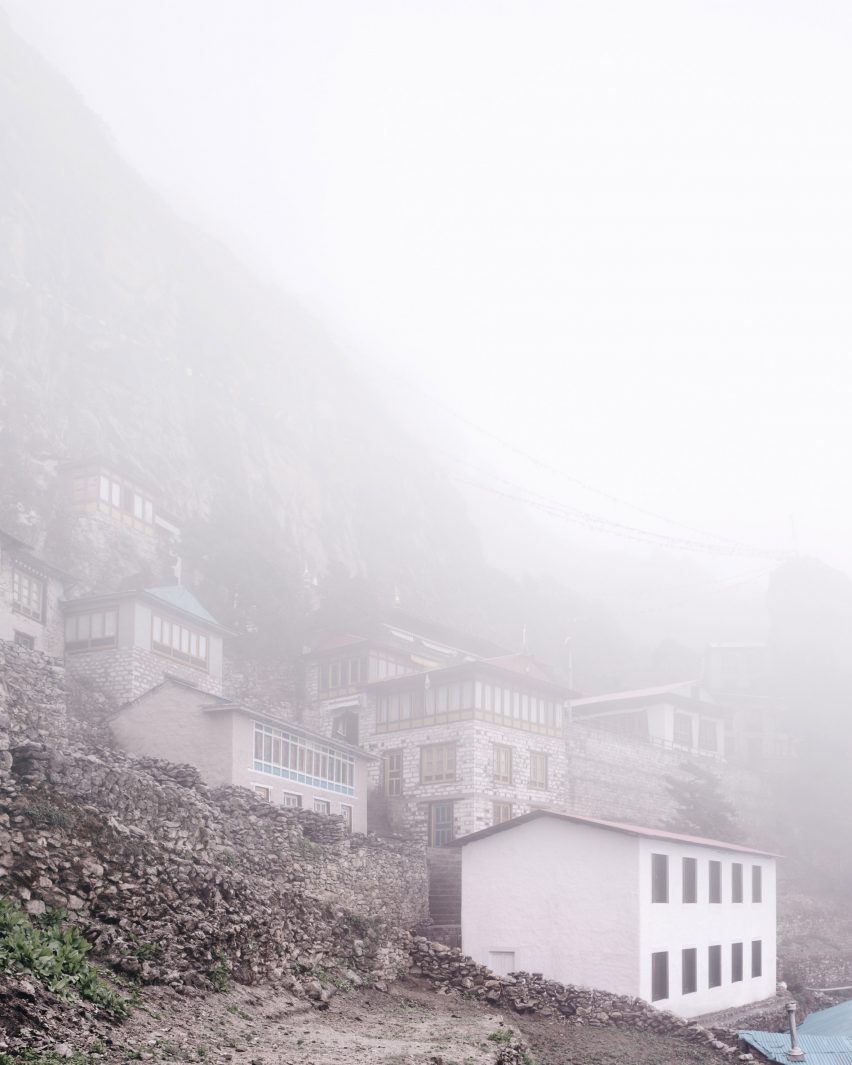
Amy Frearson: Can you tell me about some of your most memorable photoshoots?
Simone Bossi: One of the most important ones was probably when I decided to switch from digital to film. I was asked to shoot a private house close to Seville. It was the first assignment I'd decided to do with a film camera, so there was a fresh expectation behind it.
I was coming from London, so I was coming from a tone, a colour, a mood and a certain type of light, to this small village in the south of Spain. When I was there I felt completely free; I was living there for a week, I was barefoot on the patio all the time, and I just took the pictures when I wanted.
It was a very intense personal life moment. It was a time when I needed to feel freedom and privacy, and I felt this private house was designed in a way that led me to feel those things I was looking for. In the end, I had these pictures that were very blurry because it was my first experiment with film, but they were so full of energy. I think it changed me forever. I started to become more conscious of how feelings, personal experience and the people around are the soul of architecture.
Amy Frearson: Any other memorable shoots you can mention?
Simone Bossi: I have thousands of crazy stories. Once I was asked to go to Nepal to shoot a dormitory for Buddhist monks. I spent 10 days with these monks, shooting their dormitory after the earthquake. Then I was walking for three or four days with the equipment and a sherpa, and I got stuck in the monsoon and they had to rescue me in a helicopter. The week after I was in a luxury hotel in the Emirates. I went from being completely in the mud and the monsoon, with donkeys, to complete luxury.
Amy Frearson: What about your most memorable recent shoot?
Simone Bossi: I really enjoyed the experience of shooting Castelgrande in Switzerland. I had been there a thousand times because it's close to where I live but I had never really experienced it or tried to take a photo of it, because it was too much. It's such a big and complex project. There are three castles there.
It was like a meeting for me, with an old woman. I could feel before I arrived that it was going to be something amazing. This led me to the decision to not exaggerate, to not pretend to be bigger than the project. I found this analogy with the idea of the entrance as the meeting point, the first date. I wanted to work on the intrigue and the fantasy, with the idea to meet each other again and see how it evolves.
When this project was published, I had no expectation about it. But I really enjoyed how people proceeded with the story. There were some people that shared the project on the web and wanted to know more about technical things.
Some people questioned why I just shot up until this point and didn't show anything more. I had an engineer who worked there in the 1980s send me a picture of the building site. I felt like my role was as an activator and then other people took the story and brought it somewhere else.
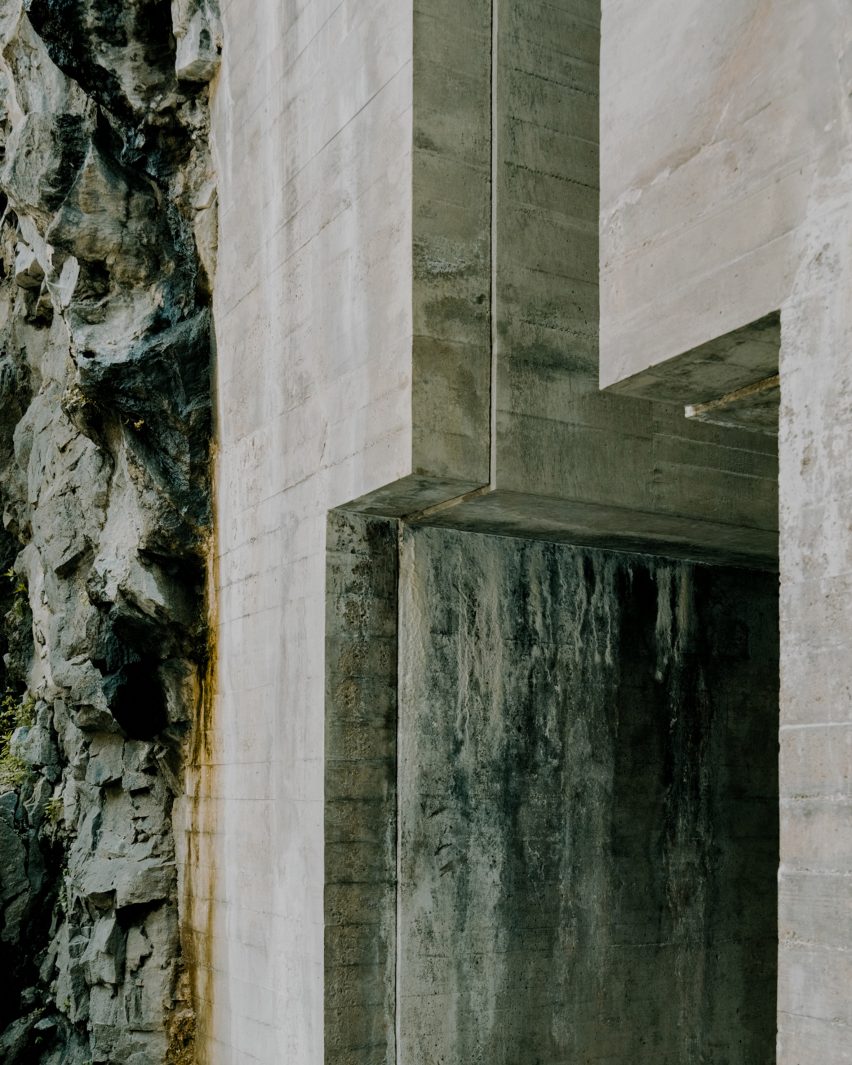
Amy Frearson: What kind of personal projects do you usually pursue? Are you attracted to certain types of buildings?
Simone Bossi: I wouldn't say that I like a particular type of building with a specific condition. Again, it's like when you meet someone. You see them from far away and you think you're going to like them when you meet them.
With architecture, I can see from a distance whether a building is for me, whether I can be comfortable and be myself there somehow. Then going deeper with my camera is the pleasure of the discovery. And there are some buildings where I understand that it's not my moment, because I don't feel any kind of attraction.
Amy Frearson: What about commissions? Do you say no to projects you don't feel a connection with?
Simone Bossi: I treat each project the best I can and I live the experience. So if I feel that I'm not the right person then it's good for the other person, not just for me, if I say no. I think that's healthy and respectful behaviour.
It's important that I feel I can work free, with a person that understands this. I'm never asked to go and shoot this moment or this room; if you tell me to do that then it is unnatural, which can be misleading for the story. It's nice when I meet architects that are interesting people, so we can talk about other things and have some sharing. These things unveil tools to go deeper into my experience of the project.
Amy Frearson: How do you decide whether you're the right person for a particular building?
Simone Bossi: When someone gets in touch with a new project, I want to know a few things. Not too much; I don't need too much technical documentation. I want the experience to remain quite pure. I just need a little bit to see what my first reaction is. I'll always say, send me what you want; you can send me a picture of the building site with a sketch, or you can send me just an image, or even a poem. Maybe a poem will tell me more about you and the project than if you explain it.